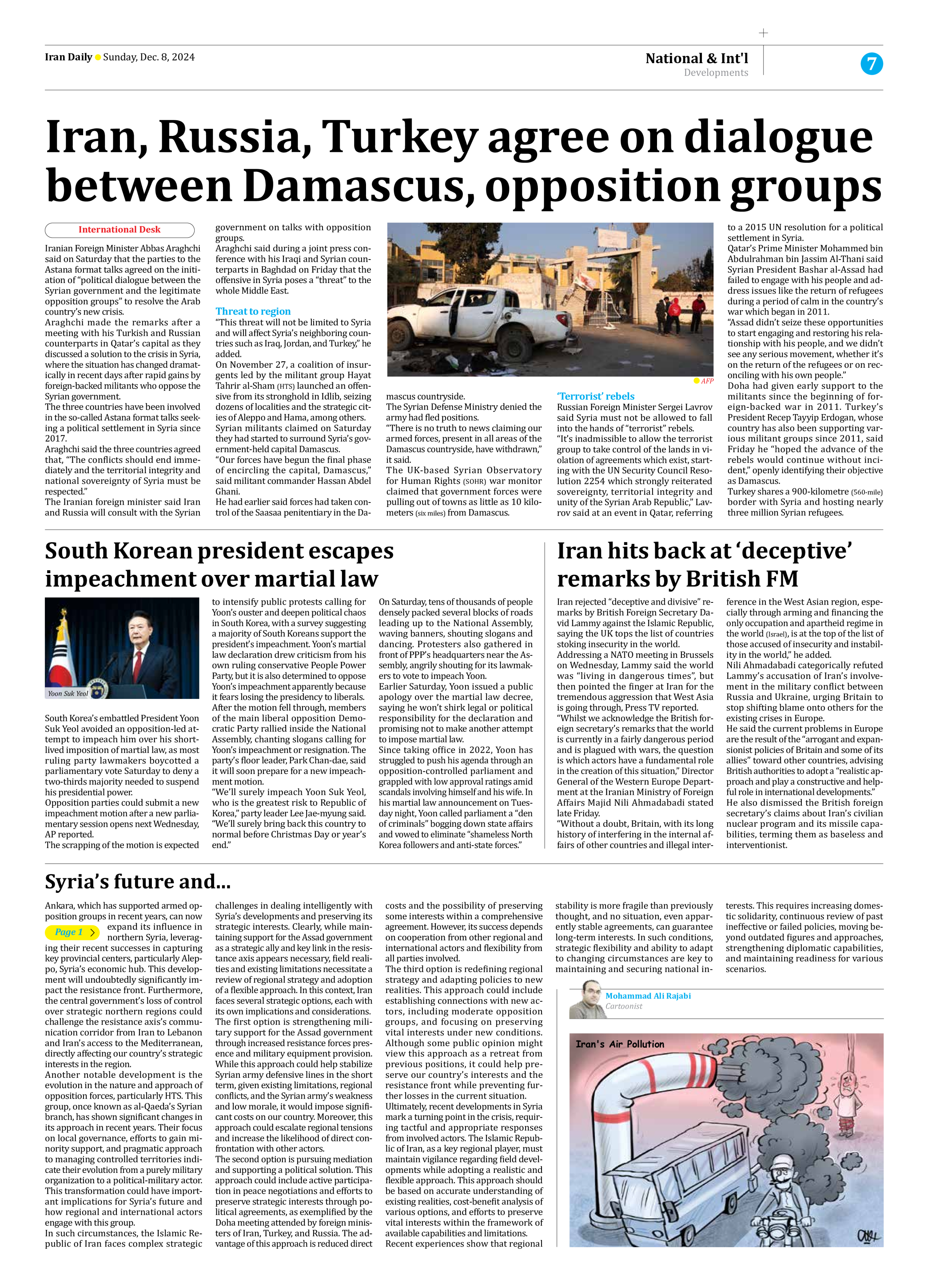
Syria’s future and...
Page 1
Ankara, which has supported armed opposition groups in recent years, can now expand its influence in northern Syria, leveraging their recent successes in capturing key provincial centers, particularly Aleppo, Syria’s economic hub. This development will undoubtedly significantly impact the resistance front. Furthermore, the central government’s loss of control over strategic northern regions could challenge the resistance axis’s communication corridor from Iran to Lebanon and Iran’s access to the Mediterranean, directly affecting our country’s strategic interests in the region.
Another notable development is the evolution in the nature and approach of opposition forces, particularly HTS. This group, once known as al-Qaeda’s Syrian branch, has shown significant changes in its approach in recent years. Their focus on local governance, efforts to gain minority support, and pragmatic approach to managing controlled territories indicate their evolution from a purely military organization to a political-military actor. This transformation could have important implications for Syria’s future and how regional and international actors engage with this group.
In such circumstances, the Islamic Republic of Iran faces complex strategic challenges in dealing intelligently with Syria’s developments and preserving its strategic interests. Clearly, while maintaining support for the Assad government as a strategic ally and key link in the resistance axis appears necessary, field realities and existing limitations necessitate a review of regional strategy and adoption of a flexible approach. In this context, Iran faces several strategic options, each with its own implications and considerations.
The first option is strengthening military support for the Assad government through increased resistance forces presence and military equipment provision. While this approach could help stabilize Syrian army defensive lines in the short term, given existing limitations, regional conflicts, and the Syrian army’s weakness and low morale, it would impose significant costs on our country. Moreover, this approach could escalate regional tensions and increase the likelihood of direct confrontation with other actors.
The second option is pursuing mediation and supporting a political solution. This approach could include active participation in peace negotiations and efforts to preserve strategic interests through political agreements, as exemplified by the Doha meeting attended by foreign ministers of Iran, Turkey, and Russia. The advantage of this approach is reduced direct costs and the possibility of preserving some interests within a comprehensive agreement. However, its success depends on cooperation from other regional and international actors and flexibility from all parties involved.
The third option is redefining regional strategy and adapting policies to new realities. This approach could include establishing connections with new actors, including moderate opposition groups, and focusing on preserving vital interests under new conditions. Although some public opinion might view this approach as a retreat from previous positions, it could help preserve our country’s interests and the resistance front while preventing further losses in the current situation.
Ultimately, recent developments in Syria mark a turning point in the crisis, requiring tactful and appropriate responses from involved actors. The Islamic Republic of Iran, as a key regional player, must maintain vigilance regarding field developments while adopting a realistic and flexible approach. This approach should be based on accurate understanding of existing realities, cost-benefit analysis of various options, and efforts to preserve vital interests within the framework of available capabilities and limitations.
Recent experiences show that regional stability is more fragile than previously thought, and no situation, even apparently stable agreements, can guarantee long-term interests. In such conditions, strategic flexibility and ability to adapt to changing circumstances are key to maintaining and securing national interests. This requires increasing domestic solidarity, continuous review of past ineffective or failed policies, moving beyond outdated figures and approaches, strengthening diplomatic capabilities, and maintaining readiness for various scenarios.







